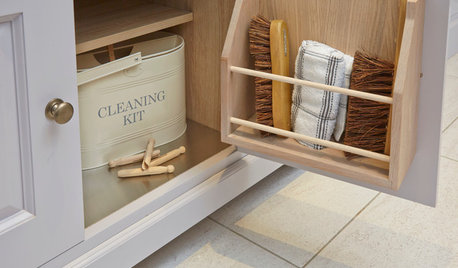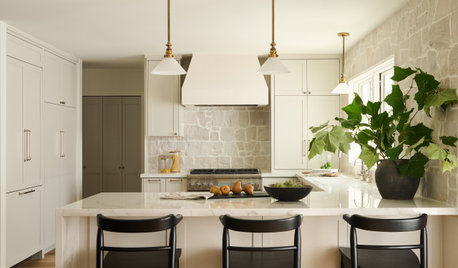First Gritty Mix Trial
Joe1980
13 years ago
Related Stories

KITCHEN DESIGNNew This Week: 2 Kitchens That Show How to Mix Materials
See how these kitchens combine textures, colors and materials into a harmonious whole
Full Story
HOUSEKEEPINGA Cleaning Routine for Your First Home
With basic supplies and room-by-room checklists, you can get into the housekeeping habit
Full Story
LAUNDRY ROOMSSoak Up Ideas From 3 Smart Laundry Rooms
We look at the designers’ secrets, ‘uh-oh’ moments and nitty-gritty details of 3 great laundry rooms uploaded to Houzz this week
Full Story
WORKING WITH PROSWhat Do Landscape Architects Do?
There are many misconceptions about what landscape architects do. Learn what they bring to a project
Full Story
GARDENING GUIDES10 Tips to Start a Garden — Can-Do Ideas for Beginners
Green up your landscape even if you're short on time, money and knowledge, with these manageable steps for first-time gardeners
Full Story
REMODELING GUIDES6 Must-Know Lessons From a Serial Renovator
Get your remodel right the first time, with this insight from an architect who's been there too many times to count
Full Story
FURNITURE11 Reasons to Love a Gray Sofa
See how a sofa in this neutral shade can take on anything you mix with it, from soft to sharp and everything in between
Full Story
KITCHEN WORKBOOKHow to Remodel Your Kitchen
Follow these start-to-finish steps to achieve a successful kitchen remodel
Full Story
Designer to Watch: Caitlin Wilson
Soak Up the Color and Warmth of a Globe-Trotting Designer's Eclectic Style
Full Story





greenman28 NorCal 7b/8a
tapla (mid-Michigan, USDA z5b-6a)
Related Professionals
Erie Landscape Architects & Landscape Designers · Richmond Heights Landscape Architects & Landscape Designers · Vernon Hills Landscape Architects & Landscape Designers · Burlington Landscape Contractors · Goodyear Landscape Contractors · Chattanooga Landscape Contractors · Dunwoody Landscape Contractors · Forest Hills Landscape Contractors · Gallatin Landscape Contractors · Lees Summit Landscape Contractors · Los Banos Landscape Contractors · Selden Landscape Contractors · Seymour Landscape Contractors · Twin Falls Landscape Contractors · West Orange Landscape Contractorsjodik_gw
Joe1980Original Author
Joe1980Original Author
greenman28 NorCal 7b/8a
meyermike_1micha
tapla (mid-Michigan, USDA z5b-6a)
MojaveLove
lathyrus_odoratus
Joe1980Original Author
meyermike_1micha
Joe1980Original Author
lathyrus_odoratus
meyermike_1micha
jodik_gw
Joe1980Original Author
jane__ny
tapla (mid-Michigan, USDA z5b-6a)
Joe1980Original Author
jodik_gw
meyermike_1micha
lathyrus_odoratus
tapla (mid-Michigan, USDA z5b-6a)
jodik_gw